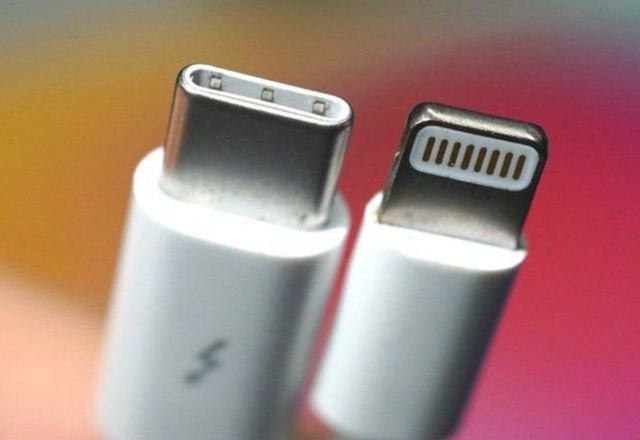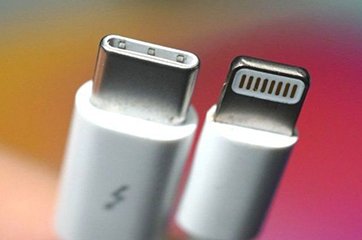
Tech Guide 2025: What Is USB-C to Lightning Cable?
Tech Guide 2025: What Is USB-C to Lightning Cable?
You’ve probably encountered a variety of cables in your daily life, but have you explored what a USB-C to Lightning cable truly offers? This high-performance connection solution bridges the gap between USB-C technology—renowned for its rapid charging capabilities and high-speed data transfer—and Apple’s proprietary Lightning interface, designed exclusively for its ecosystem of devices. In this overview, we’ll examine the technical strengths of this cable, highlight its key advantages, and detail the versatile scenarios where it delivers maximum value.
What is a USB-C to Lightning cable?
A USB-C to Lightning cable is a specialized connector designed to link Apple devices equipped with a Lightning port to devices or power sources featuring a USB-C interface.
USB-C, formally known as USB Type-C, is a universal, reversible connector standard celebrated for its symmetrical design, faster data transfer rates, and support for high-wattage power delivery. Unlike its predecessors—USB-A and USB-B—USB-C can be inserted in either orientation, improving ease of use and durability.
Lightning, on the other hand, is Apple’s proprietary interface engineered to connect iPhones, iPads, iPods, and certain AirPods models to computers, displays, cameras, chargers, and various accessories.
Lightning, on the other hand, is Apple’s proprietary interface engineered to connect iPhones, iPads, iPods, and certain AirPods models to computers, displays, cameras, chargers, and various accessories.
Benefits and Advantages of a USB-C to Lightning Cable
Enhanced Fast-Charging Capability
One of the most significant benefits of a USB-C to Lightning cable is its ability to leverage USB Power Delivery (USB-PD) for accelerated charging. This enables compatible iPhones to charge up to 50% in roughly 30 minutes, making it ideal for users who need rapid power replenishment.
One of the most significant benefits of a USB-C to Lightning cable is its ability to leverage USB Power Delivery (USB-PD) for accelerated charging. This enables compatible iPhones to charge up to 50% in roughly 30 minutes, making it ideal for users who need rapid power replenishment.
By uniting the USB-C and Lightning standards, this cable offers broad cross-device compatibility. As USB-C continues to be adopted as the universal interface for laptops, tablets, and accessories, a single cable can streamline charging for both Apple and non-Apple devices.
Bidirectional Power Transfer
USB-C technology supports bidirectional power flow, meaning the cable can deliver power to an Apple device or, in certain scenarios, allow the Apple device to charge another peripheral—provided both ends support reverse charging.
High-Speed Data Synchronization
In addition to charging, a USB-C to Lightning cable supports high-throughput data transfer, enabling quick syncing, large file transfers, and efficient backups between devices. This is especially valuable for professionals handling high-resolution media or extensive data sets.
Applications and Use Cases of a USB-C to Lightning Cable
Charging and Data Synchronization for Apple Devices
A USB-C to Lightning cable provides a reliable means to power Apple devices with a Lightning connector while simultaneously enabling data synchronization with a Mac or PC.
Direct Connectivity to Modern Computers
With many contemporary laptops—including recent MacBook models and high-end Windows PCs—featuring USB-C ports, this cable facilitates a direct and efficient connection between your iPhone or iPad and the host device, eliminating the need for adapters.
Optimized Fast Charging for iPhone and iPad
When paired with a compatible USB-C power adapter, the cable supports fast charging for eligible iPhone and iPad models, significantly reducing downtime and improving charging efficiency.
Audio and Video Data Transfer
Beyond power and file synchronization, the cable can be utilized to transmit audio and video content directly between Apple devices and USB-C–equipped computers, monitors, or media systems, enhancing multimedia workflows.
On-the-Go Charging via Power Banks
For mobile users, the cable enables convenient charging from USB-C output power banks, ensuring your iPhone stays powered during travel or extended periods away from traditional outlets.
How do I find the best USB-C to Lightning cable?
To choose the best USB-C to Lightning cable, evaluate three core areas: certification, electrical capability, and build quality. First, confirm Apple MFi authorization — certified cables meet Apple’s interoperability and firmware-update requirements and are far less likely to produce compatibility warnings. Second, verify the cable’s power and data specifications: it should explicitly support USB Power Delivery (PD) and be rated for the wattage you plan to use with your charger, and the manufacturer should state the cable’s maximum data throughput (many Lightning cables implement USB 2.0 speeds, while a few are optimized for higher transfer rates). Third, inspect the physical construction: look for robust conductor materials and gauge, plated connectors, molded strain reliefs, braided or reinforced jackets, and multi-layer shielding — these details predict longevity and resistance to fraying, kinking, and electrical noise. Also weigh practical factors like length and flexibility for your use case, reputable brand warranty and returns, and real-world test results or user reviews (bend-cycle ratings, long-term durability reports). Prioritizing clear technical specs and Apple certification will give you the most reliable, long-lasting cable for fast charging and dependable data sync.
Conclusion
For businesses, resellers, and tech distributors seeking a dependable wholesale partner, Cable-c stands out as a premier source for USB-C to Lightning cables. Combining Apple MFi certification, superior materials, and rigorous quality control, Cable-c delivers products that meet both performance demands and industry safety standards. With proven durability, fast-charging capability, and broad compatibility, these cables are ideal for bulk procurement in retail, corporate supply, or OEM integration. Partnering with Cable-c ensures consistent product quality, competitive wholesale pricing, and the reliability your customers expect.
FAQ
Will my iPhone charge faster with a USB-C to Lightning cable?
Yes. When paired with a higher-wattage USB-C power adapter—such as 18W, 20W, or above—a USB-C to Lightning cable can significantly reduce charging time. This is due to USB-C’s support for greater power delivery compared to standard USB-A chargers, enabling Apple’s Fast Charge feature on compatible iPhone models.
Can I use a USB-C to Lightning cable to charge any Apple device?
You can charge any Apple device that features a Lightning port, including iPhone 5 and later models, most iPads with Lightning, and certain accessories like the Apple Magic Keyboard and Magic Mouse. Devices with a native USB-C port, such as recent iPad Pro models, will require a USB-C to USB-C cable instead.
Is it worth buying an MFi-certified USB-C to Lightning cable?
Absolutely. MFi (Made for iPhone/iPad/iPod) certification is Apple’s quality assurance program ensuring accessory safety, reliability, and full device compatibility. Non-certified cables may fail to meet performance standards, trigger compatibility errors, or even damage your device.
Can I transfer data to my Mac using a USB-C to Lightning cable?
Yes. A USB-C to Lightning cable enables fast and stable data transfer between an iPhone or iPad and a Mac equipped with USB-C ports. It supports quick file syncing, data backup, and software updates while also providing power during the connection.
Can I charge my iPad with a USB-C to Lightning cable?
Yes, provided your iPad has a Lightning connector and the cable’s specifications match your model. For the best results, connect it to a USB-C power adapter rated at 20W or higher to achieve faster, more efficient charging.


